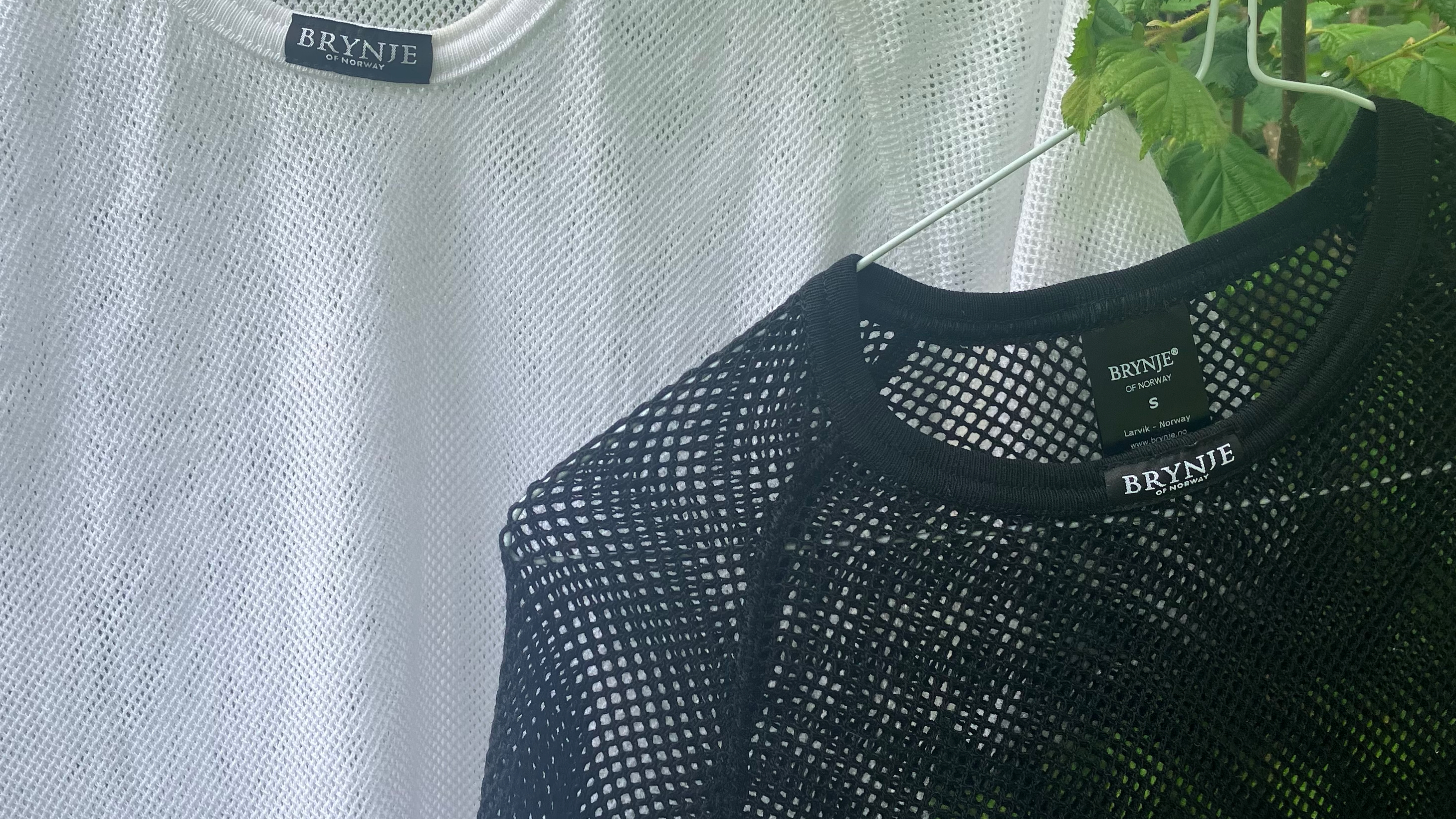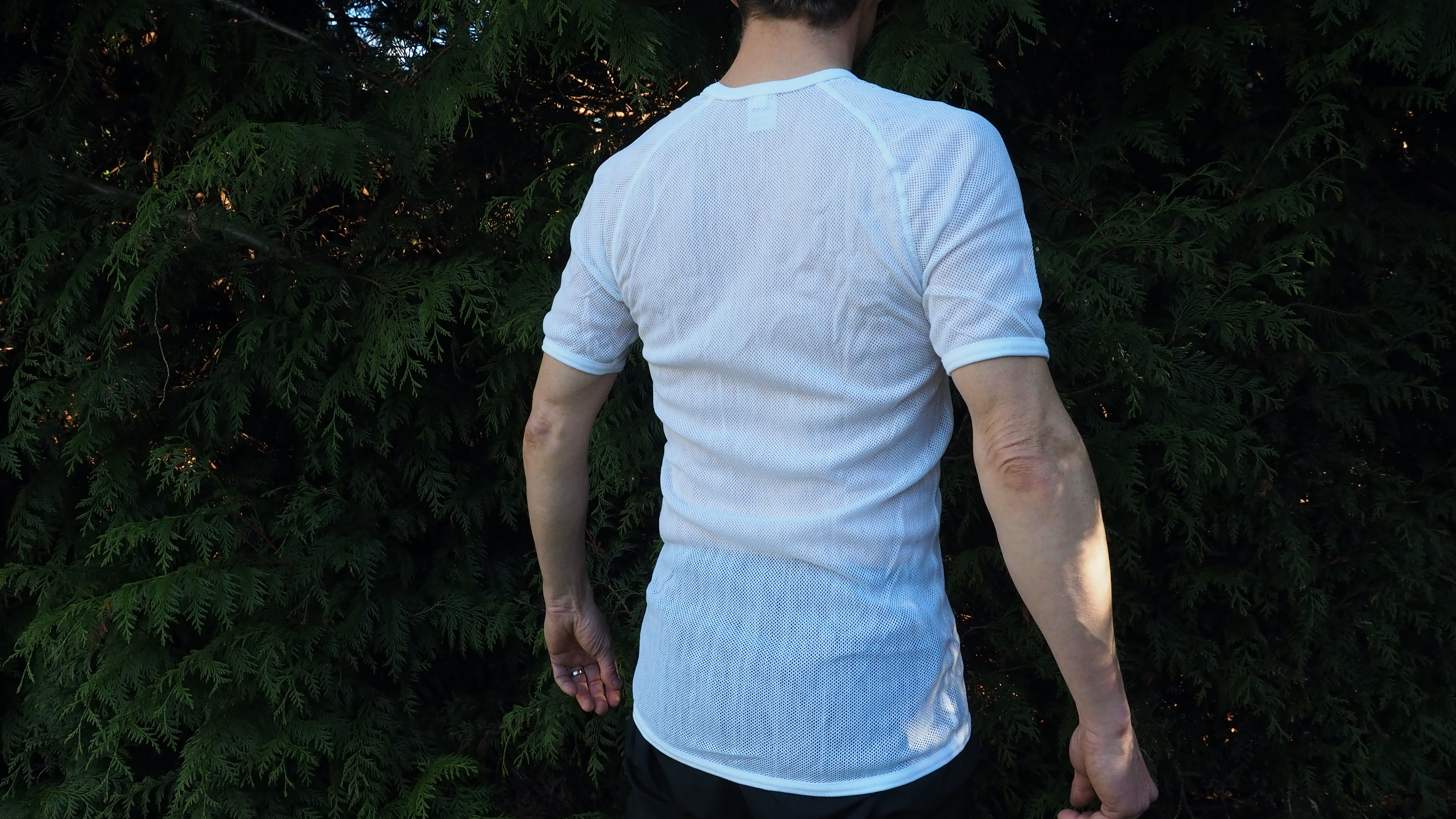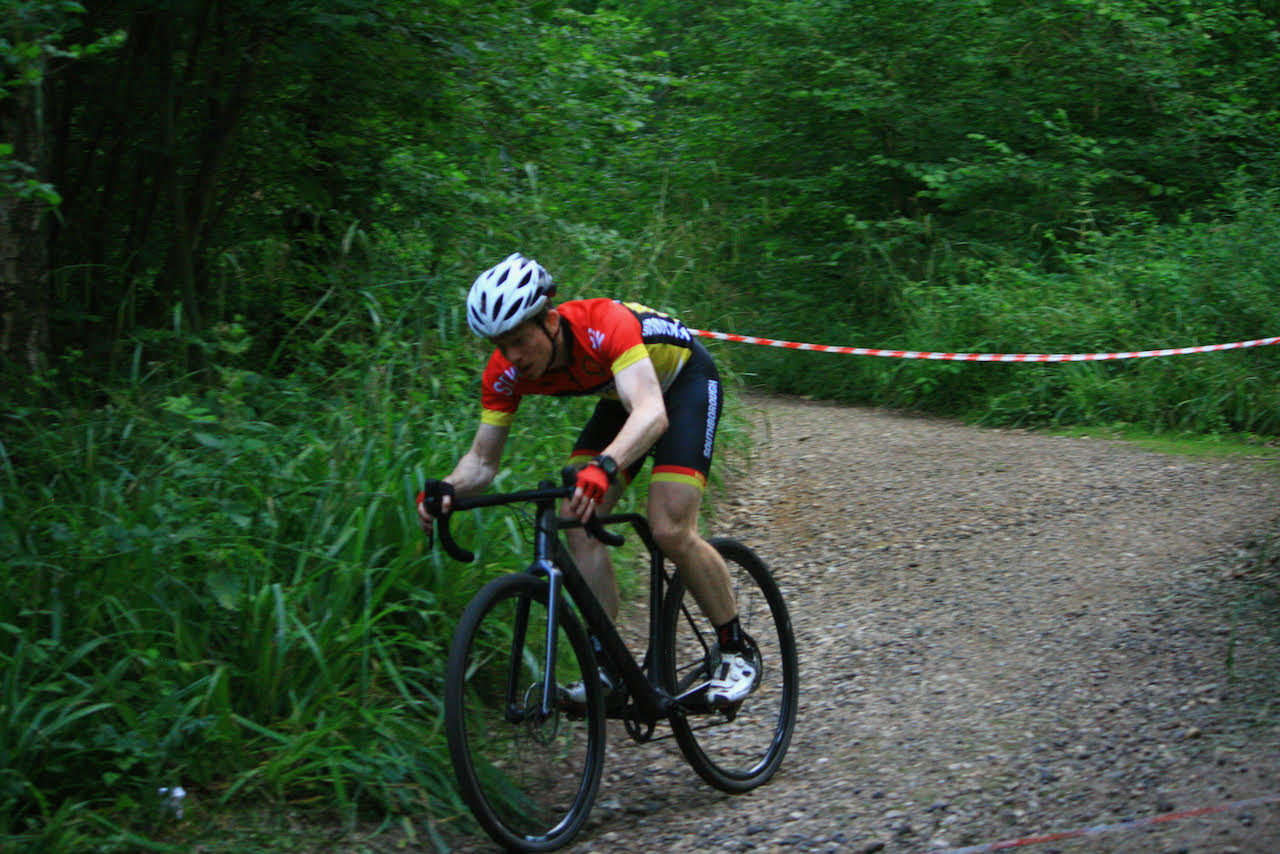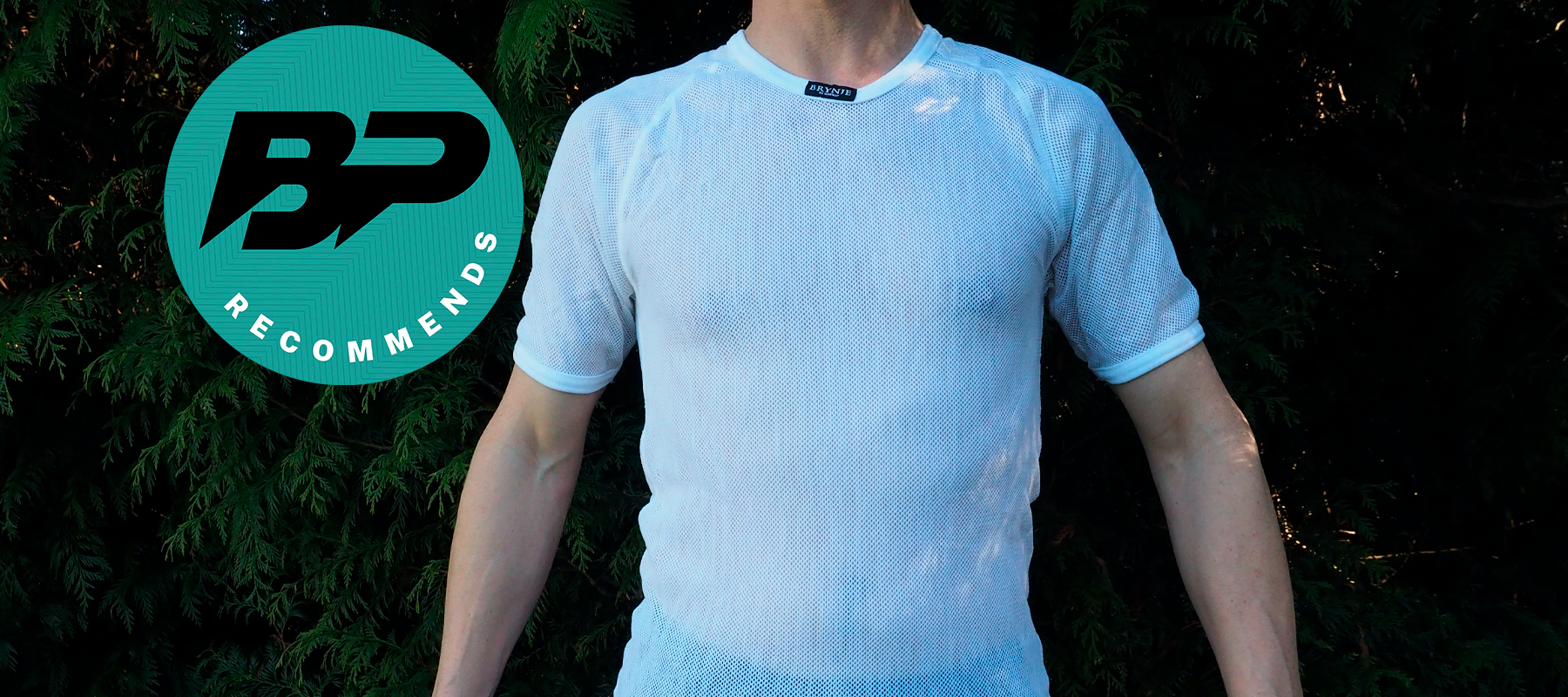Bike Perfect Verdict
It might feel synthetic and lack a bit of stretch, but boy does the Super Micro T-shirt perform. It really helps to keep your comfort levels steady.
Pros
- +
Super-dry against the skin
- +
Mesh makes it easy to dump heat
- +
Easier on the eye than a more open mesh
- +
Long cut
Cons
- -
Synthetic feel
Why trust BikePerfect
If people weren’t so worried about appearance, everyone would choose synthetic mesh for their base layers. It’s just so effective at keeping you dry and regulating heat.
Mesh moves liquid sweat well because of its large surface area, it lets sweat evaporate away from the skin more easily because of the gaps, and it allows you to dump excess heat just by undoing your jersey zip. At that point the warm air that was trapped in the weave of the mesh gets carried away and the breeze is instantly on your skin.
This versatility is at its strongest with a winter mesh base layer like the definitive Super Thermo base from Norwegian brand Brynje, where the wide mesh traps loads of warm air when you want it to, and the wicking keeps you dry.
The Super Micro is its warmer-weather sibling, with more of a focus on dryness and cooling than trapping warm air.

Design and specifications
The Super Micro T-Shirt uses the same 100% polypropylene fibres as the Super Thermo, woven into a thinner fabric with smaller gaps in the mesh. The finer mesh has more contact with the skin to lift moisture off, less of a thermal effect because it traps less air, and looks more conventional than the classic fishnet, too.
Polypropylene is one of the workhorses of the wicking-fibres world – it’s light, hard wearing, and attracts moisture in just the right way to move it away from the skin to your outer layer where it can evaporate.
There’s nothing complex about the Super-Micro design: the same fabric is used throughout, with flat-locked seams and elasticated hems on the arms, neck and waist. It’s a slim but slightly looser cut than some base layers, there’s a little give in the fabric because it’s a mesh, but it’s not stretchy in a body-hugging kind of way. The shoulder seams are diagonally placed (raglan cut) for comfort and ease of movement, and – always a small delight – the generous body length means it tucks in and stays tucked in. There’s also a sleeveless version.

Performance
You might wonder why you’d want a summer base layer at all. Surely most technical jerseys do an okay job of wicking, and if you want to stay as cool as possible, you don’t want another layer trapping air next to the skin.
If you want to be as cold as possible – in flat out summer racing for example – then yes, just a jersey would be better, because while it won’t move moisture away as well as a mesh base, dampness against the skin will help cool you. But if you’re doing normal riding and you want to avoid a cold clammy feeling when you stop or turn into a breeze, then a base layer definitely helps. In other words, it’s about comfort, and for most of us, most of the time, comfort isn’t just about coolness.
Wearing it with a non-zip jersey would be a bit more of a decision, perhaps, as you don’t have the option of dumping heat out so easily, but it will still keep clammy fabric off your skin.
I was super-happy with the Super Micro, which I usually wore with a zip jersey. In cooler temperatures, say 10-12C, it helped keep a little warmth, and then as it got warmer, or on hills, dumping heat out from the jersey zip was easy. Even when it got towards 20C, a temperature where I’d normally be wearing a jersey with no base, I’d forgotten I was wearing it, in a good way – it just helped to regulate my comfort, with no clamminess..
In terms of fit and feel, the fabric definitely feels firm and synthetic rather than cottony or silky, but I didn’t find in the slightest uncomfortable and it’s a price I’m more than willing to pay for the performance. There’s a slight puffiness to the cut of the underarms and sleeves, but maybe that’s just a sign that I need to spend more time at the gym.
If the durability is anything like that of my old faithful Super Thermo, it will be going strong into the 2040s, and while some people worry that polypro fabrics hold on to sweaty smells for ever, I personally haven’t had that problem, especially using a tech wash like Halo.
Verdict
Brynje polypro mesh shirts are ridiculously good performers – you really would be very hard pressed to find something that keeps you drier. I’m a huge fan of the winter Super Thermo base, and the Super Micro complements it nicely for the warmer half of the year.
Tech specs: Brynje Super Micro T-Shirt
- Price: $36.00 / £34.00
- Weight: 110g (S)
- Sizes: XS-XXL
- Color: White
- Materials: 100% polypropylene

Sean has old school cycle touring in his blood, with a coast to coast USA ride and a number of month-long European tours in his very relaxed palmares. Also an enthusiastic midpack club cyclocross and XC racer, he loves his role as a junior cycle coach on the Kent/Sussex borders, and likes to squeeze in a one-day unsupported 100-miler on the South Downs Way at least once a year. Triathlon and adventure racing fit into his meandering cycling past, as does clattering around the Peak District on a rigid Stumpjumper back in the day.
Height: 173cm
Weight: 65kg
Rides: Specialized Chisel Comp; Canyon Inflite CF SLX; Canyon Aeroad; Roberts custom road bike

